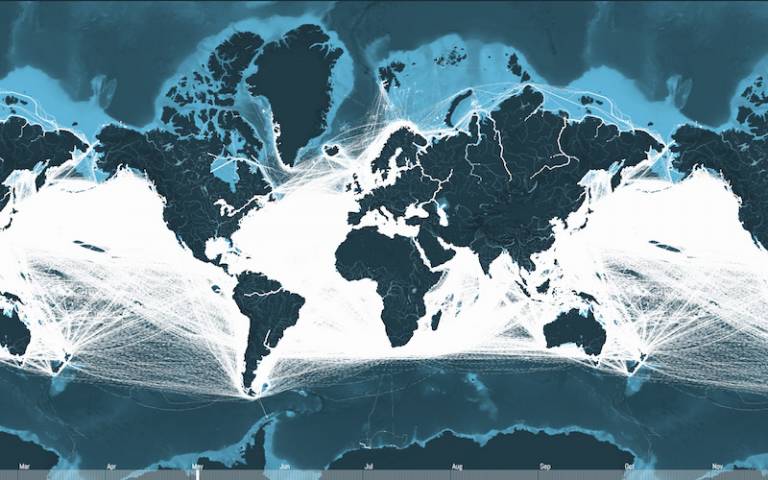UCL helps reduce the carbon footprint of the shipping industry
With ULEZ and other CO2-reducing initiatives kicking in, what about shipping emissions? Dr Tristan Smith, and Dr Julia Schaumeier from UCL’s Energy Institute published innovative data on shipping emissions - a vital step in reducing CO2 emissions in the shipping industry.

UCL researchers, working with the visualisation studio Kiln, created a map showing carbon emissions from all the ships in the world in a given year, highlighting the true scale of shipping’s role in the climate crisis.
The shipping industry is a key driver of the global economy, delivering about 90 per cent of the products we use in our lives. However, maritime greenhouse gas emissions are rising and the industry is under pressure to reduce its CO2 emissions to tackle growing climate concerns.
This is where UCL academics stepped in. Dr Tristan Smith, and Dr Julia Schaumeier (UCL Energy Institute) used a new methodology to calculate global shipping emissions and assembled 250 million data points to show the progress of the world’s commercial fleet over the course of a year.
Their interactive map (www.shipmap.org) received over a million views in four weeks, won prestigious awards including the Kantar Information is Beautiful Award, and was tweeted by Bill Gates.
The institute’s analysis of global shipping emissions was also presented to the United Nations International Maritime Organisation, showing the full extent of the shipping emissions challenge for the first time and setting a framework for future discussions on regulating CO2 emissions.
UCL’s research strengthened calls for a quantifiable and ambitious target to reduce shipping emissions. It has improved public awareness of the impact of shipping and the role shipping plays in modern life, carrying our goods around the world.
Links
- UCL news story
- UCL news story 2
- On City AM
- Dr Tristan Smith’s academic profile
- UCL Energy Institute
- UCL Innovation & Enterprise
Image
- Credit/Source: shipmap.org
 Close
Close

